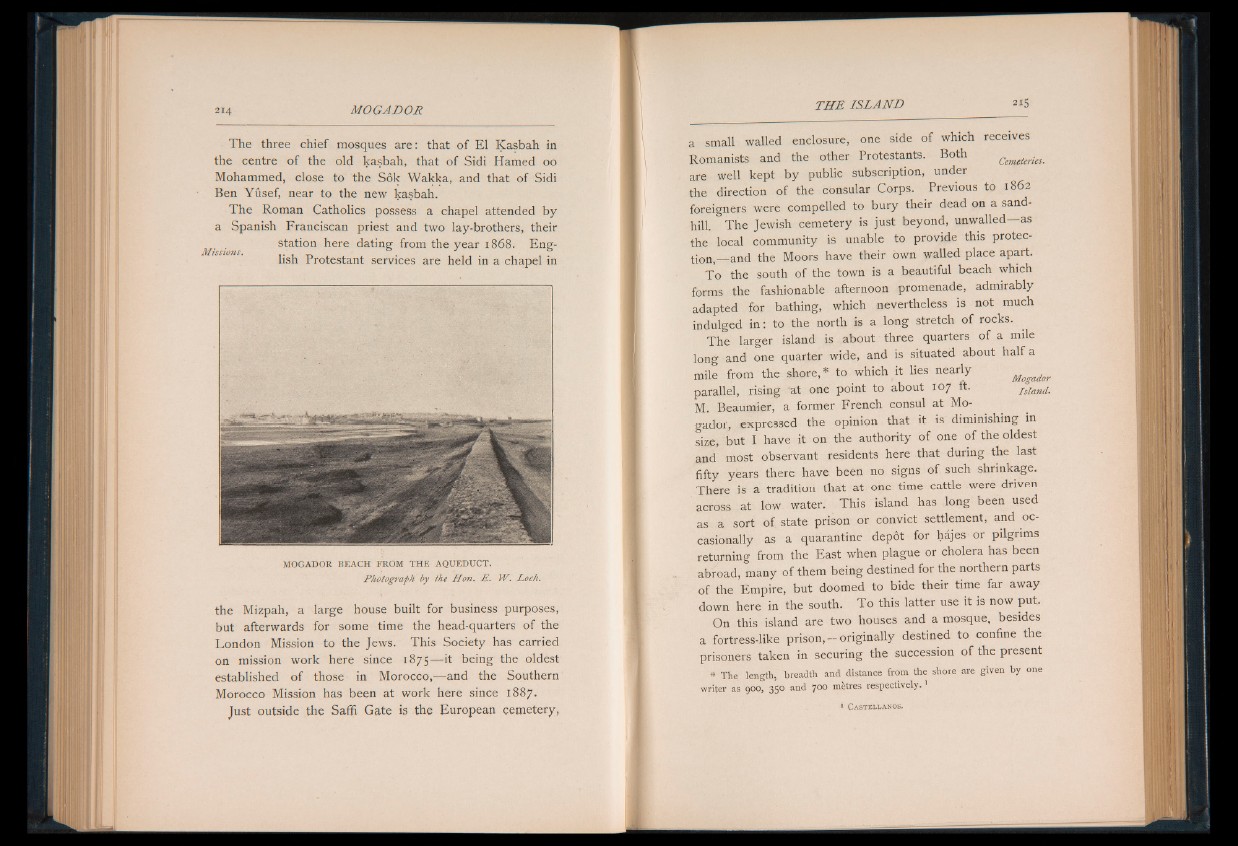
The three chief mosques a re : that of El Kasbah in
the centre of the old kasbah, that of Sidi Hamed oo
Mohammed, close to the Sok Wakka, and that of Sidi
Ben Yusef, near to the new kasbah.
The Roman Catholics possess a chapel attended by
a Spanish Franciscan priest and two lay-brothers, their
station here dating from the year 1868. Engisswns.
. 1 1 . •
lish rrotestant services are held in a chapel in
MOGADOR BEACH FROM TH E AQUEDUCT.
Photograph by the Hon. E . W. Loch.
the Mizpah, a large house built for business purposes,
but afterwards for some time the head-quarters of the
London Mission to the Jews. This Society has carried
on mission work here since 1875— it being the oldest
established of those in Morocco,— and the Southern
Morocco Mission has been at work here since 1887.
Just outside the Saffi Gate is the European cemetery,
a small walled enclosure, one side of which receives
Romanists and the other Protestants. Both Cemeteries.
are well kept by public subscription, under
the direction of the consular Corps. Previous to 1862
foreigners were compelled to bury their dead on a sandhill.
The Jewish cemetery is just beyond, unwalled as
the local community is unable to provide this protection
and the Moors have their own walled place apart.
To the south of the town is a beautiful beach which
forms the fashionable afternoon promenade, admirably
adapted for bathing, which nevertheless is not much
indulged in: to the north is a long stretch of rocks.
The larger island is about three quarters of a mile
long and one quarter wide, and is situated about half a
mile from the shore,* to which it lies nearly Mogador
parallel, rising at one point to about 107 ft. island.
M. Beaumier, a former French consul at Mogador,
expressed the opinion that it is diminishing in
size, but I have it on the authority of one of the oldest
and most observant residents here that during the last
fifty years there have been no signs of such shrinkage.
There is a tradition that at one time cattle were driven
across at low water. This island has long been used
as a sort of state prison or convict settlement, and occasionally
as a quarantine depot for hajes or pilgrims
returning from the East when plague or cholera has been
abroad, many of them being destined for the northern parts
of the Empire, but doomed to bide their time far away
down here in the south. To this latter use it is now put.
On this island are two houses and a mosque, besides
a fortress-like prison,-originally destined to confine the
prisoners taken in securing the succession of the present
* The length, breadth and distance from the shore are given by one
writer as 900, 350 and 700 metres respectively. 1
1 C a s t e m -a n o s .